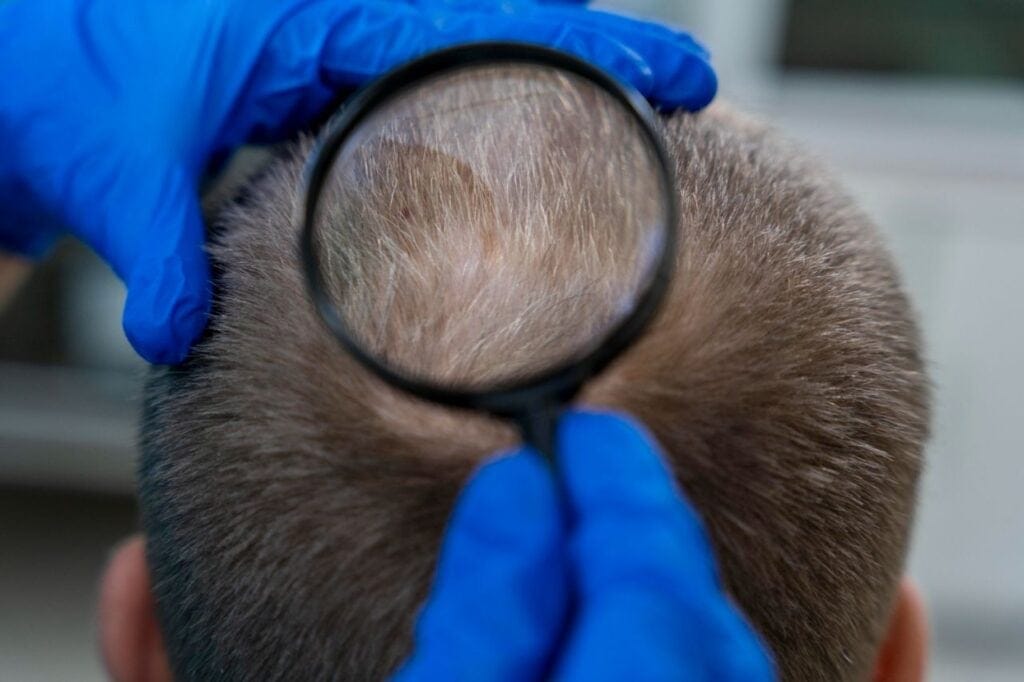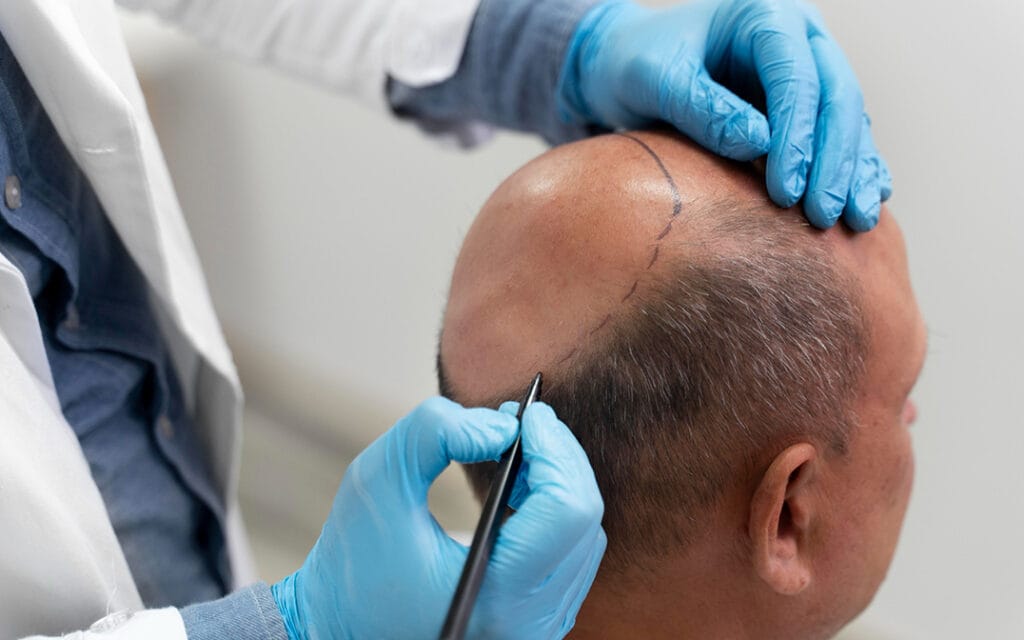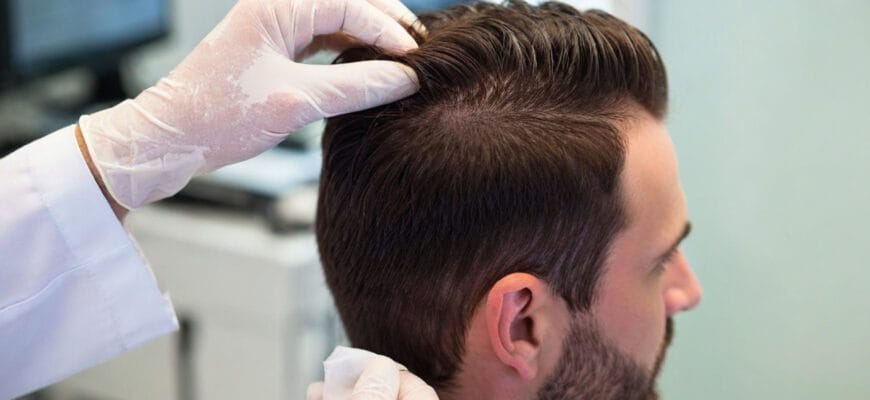Searching ‘what to expect the hair transplant process explained’? You’re in the right place. This article will break down everything from the initial consultation to post-procedure care, so you know exactly what happens at each step of the process. Whether you’re curious about the surgery itself, recovery, or long-term results, we’ve got you covered.
Table of Contents
Key Takeaways
- Hair transplant surgery relocates healthy hair follicles to areas of thinning or baldness, offering a permanent solution when performed by skilled specialists.
- Choosing the right transplant method, such as FUE or FUT, is crucial and should be decided during a consultation with a qualified specialist to align with individual hair loss patterns and goals.
- Post-procedure care and adherence to aftercare guidelines significantly influence the healing process and overall success of the hair transplant, with full results observed typically between six to nine months after the procedure.
Understanding Hair Transplant Surgery
Hair transplant surgery, a time-tested solution for hair loss, involves the careful extraction and implantation of hair follicles from one part of the scalp to another. The primary goal is to relocate healthy hair to areas where hair is thinning or completely gone, thereby restoring a fuller head of hair and a more natural hairline. This process is performed by specialist surgeons and has been refined over decades since its inception in the 1950s. Clinics today pride themselves on providing comprehensive information and personalized care to ensure the best outcomes, including options like hair transplantation and hair replacement surgery.

The success of hair transplants hinges on the skill of the surgeon and the quality of the clinic chosen. Transplanted hair follicles continue to grow in their new location, offering a permanent solution to hair loss when performed correctly. Knowing the different types of hair transplants and choosing the most suitable method is key to achieving the best results.
Types of Hair Transplants
Hair transplant surgery encompasses various techniques, each tailored to address specific needs and preferences. The most common methods are Follicular Unit Extraction (FUE) and Follicular Unit Transplantation (FUT). FUT involves removing a strip of skin from the back of the head and dividing it into individual grafts, while FUE extracts individual hair follicles, minimizing scarring and recovery time.
Other techniques like scalp reduction, flap surgery, and tissue expansion are less common but may be suitable for specific cases. Each method has its advantages, and understanding these can help you choose the right type for your needs.
Choosing the Right Method
A consultation with a qualified specialist helps determine the appropriate hair transplant method. This ensures the technique aligns with your hair loss pattern and personal goals for optimal results.
A minimally invasive technique like FUE might be recommended for those looking for a quicker recovery and less visible scarring.
Initial Consultation and Planning
The first step to a successful hair transplant is an initial consultation with an experienced specialist who assesses your hair loss and sets realistic goals.
The specialist evaluates various factors during the consultation to determine your suitability for the procedure.
Assessing Suitability
In the initial consultation, the specialist uses tools like the Norwood Scale to evaluate the extent and pattern of your hair loss. They also assess factors such as overall health, hair loss characteristics, and any underlying conditions to ensure you’re a suitable candidate.
Patients are also given pre-surgery instructions, including dietary guidelines and advice to stop smoking to enhance healing.
Designing Your New Hairline
A significant part of the consultation involves designing your new hairline. Surgeons use visual aids to illustrate potential outcomes, helping you understand what to expect. This customized design considers your goals, hair characteristics, and natural growth patterns to ensure a natural-looking result.
The Hair Transplant Procedure
On the day of the hair transplant surgeries, the surgical team welcomes you, reviews the procedure, and ensures all consent forms are signed. The surgery involves moving small grafts from a donor area to bald or thinning areas of the scalp.
This process requires precision and expertise to achieve a natural-looking result.

Preparation and Anesthesia
Preparation includes a thorough scalp examination to determine hair density and the number of grafts needed. The donor area is trimmed short to facilitate graft removal, and local anesthesia combined with sedation is administered to keep you comfortable during the procedure.
Extracting Hair Follicles
The extraction process varies by technique. FUT involves removing a strip of skin from the back of the head and dividing it into grafts, while FUE extracts individual hair follicles using a specialized instrument that creates small, round holes in the donor site. This less invasive method minimizes damage to surrounding tissues and reduces recovery time.
Surgeons may inject saline solution into the scalp during extraction to maintain its strength and ease the process. Micro-grafts, containing one to two hairs, are often preferred over traditional grafts for a more refined approach.
Implanting Hair Follicles
After extraction, the hair follicle are carefully implanted into pre-made slits in the scalp. The angle and direction of implantation are crucial to mimic natural hair growth and achieve a seamless blend with existing hair.
Grafts are placed about one-eighth of an inch apart to ensure healthy circulation and natural growth.
Post-Procedure Care and Recovery
Effective aftercare is vital to the success of a hair transplant. Adhering to the provided guidelines after the procedure can significantly enhance healing and ensure the best results.
Immediate Aftercare
In the first week, it’s crucial to follow specific aftercare instructions:
- Spray a saline solution with copper peptides on the transplanted area every 2-3 hours to help promote healing.
- Avoid washing your hair for the first 48 hours to prevent graft disruption.
- When you do wash, ensure minimal water pressure and use lukewarm temperature.
Swelling, which is common, can be managed with ice and prescribed medications. Staying hydrated and protecting the scalp from the sun are also important during this period.
Managing Side Effects
Common side effects include temporary swelling and redness, which typically resolve within a few days.
Regularly monitoring the health of the scalp helps identify any issues promptly.
Long-term Care
Long-term care involves maintaining a consistent hair care routine. Using a mild shampoo to keep the scalp clean and applying natural hair masks can support healthy growth.
Elevating the head for the first few days post-surgery helps minimize swelling.
Hair Growth Timeline
Knowing the hair growth timeline post-transplant helps set realistic expectations, with phases that include shedding, early growth, and achieving full results.
Initial Shedding Phase
The initial shedding phase, known as ‘shock loss,’ occurs within the first few weeks after surgery. This temporary phase indicates that the hair follicles are entering a resting phase, and new growth usually follows in subsequent months.
Early Growth Phase
New hair growth typically begins around three to four months post-transplant. Initially, the hair appears fine and may be lighter than the surrounding hair but gradually thickens and blends in.
Full Results
Full results typically appear between six to nine months, with significant improvements in hair density and coverage. Some patients may continue to see growth and thickening for up to 14-15 months.
Longevity of Hair Transplants
Hair transplants can last for decades, sometimes a lifetime. Factors like the characteristics of the recipient site and adherence to prescribed hair loss medications impact the longevity of the results.

Maintaining Results
Maintaining the results of a hair transplant involves regular follow-up visits and possibly using hair loss treatments like minoxidil and finasteride. These treatments can help manage ongoing hair loss in untreated areas.
Choosing the Right Clinic
Choosing the right clinic is critical for a successful hair transplant. Investigate the medical team’s experience and qualifications, ensuring they are board-certified and have a strong history in hair restoration.
Reading patient reviews and testimonials can provide valuable insights into the clinic’s reputation.
Questions to Ask
Prepare a list of essential questions when choosing a clinic, including inquiries about the surgeon’s experience, the techniques used, and the expected outcomes.
Ensuring the clinic addresses your unique needs and provides thorough aftercare support is vital for a successful experience.
Summary
To sum up, hair transplant surgery offers a permanent solution to hair loss, with a detailed process from consultation to achieving full results. Understanding each step helps set realistic expectations and ensures a smooth journey toward a fuller head of hair.
Contact us today and get the best offer!
Read Also:
Understanding the Costs of Hair Transplantation Made Clear
Best Beard Transplant in Turkey
Top Cutting Edge Hair Transplant Techniques for Optimal Results
Frequently Asked Questions
What is the timeline for hair transplant progress?
What is the timeline for hair transplant progress?
What are all the stages of hair transplant?
The stages of a hair transplant include graft extraction, creating channels in the scalp, and implanting hair follicles into the recipient area. Each step is crucial for achieving a successful and natural-looking result.
How long does it take to see full results from a hair transplant?
You can expect to see full results from a hair transplant within 12 months, with significant improvements often noticeable between six to nine months post-surgery. Some individuals may experience continued growth and thickening up to 14-15 months.
What are the common side effects after a hair transplant?
Common side effects after a hair transplant include temporary swelling and redness, typically resolving within a few days. It is important to monitor the scalp’s health to swiftly address any potential issues.
How do I choose the right hair transplant clinic?
To choose the right hair transplant clinic, ensure the medical team is board-certified and possesses significant experience, while also reviewing patient testimonials for an accurate assessment of the clinic’s quality of care. This approach will help you make an informed decision.

